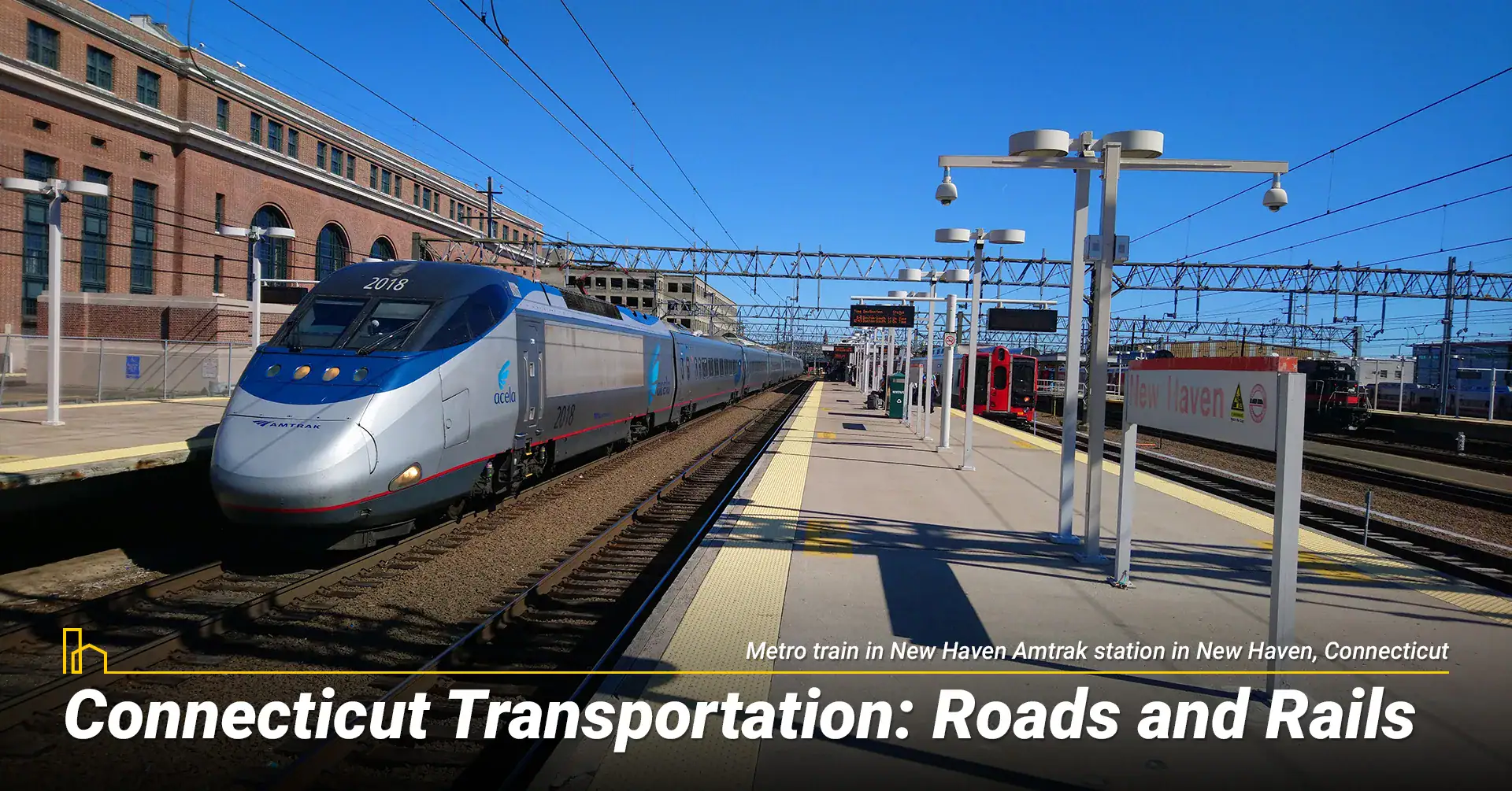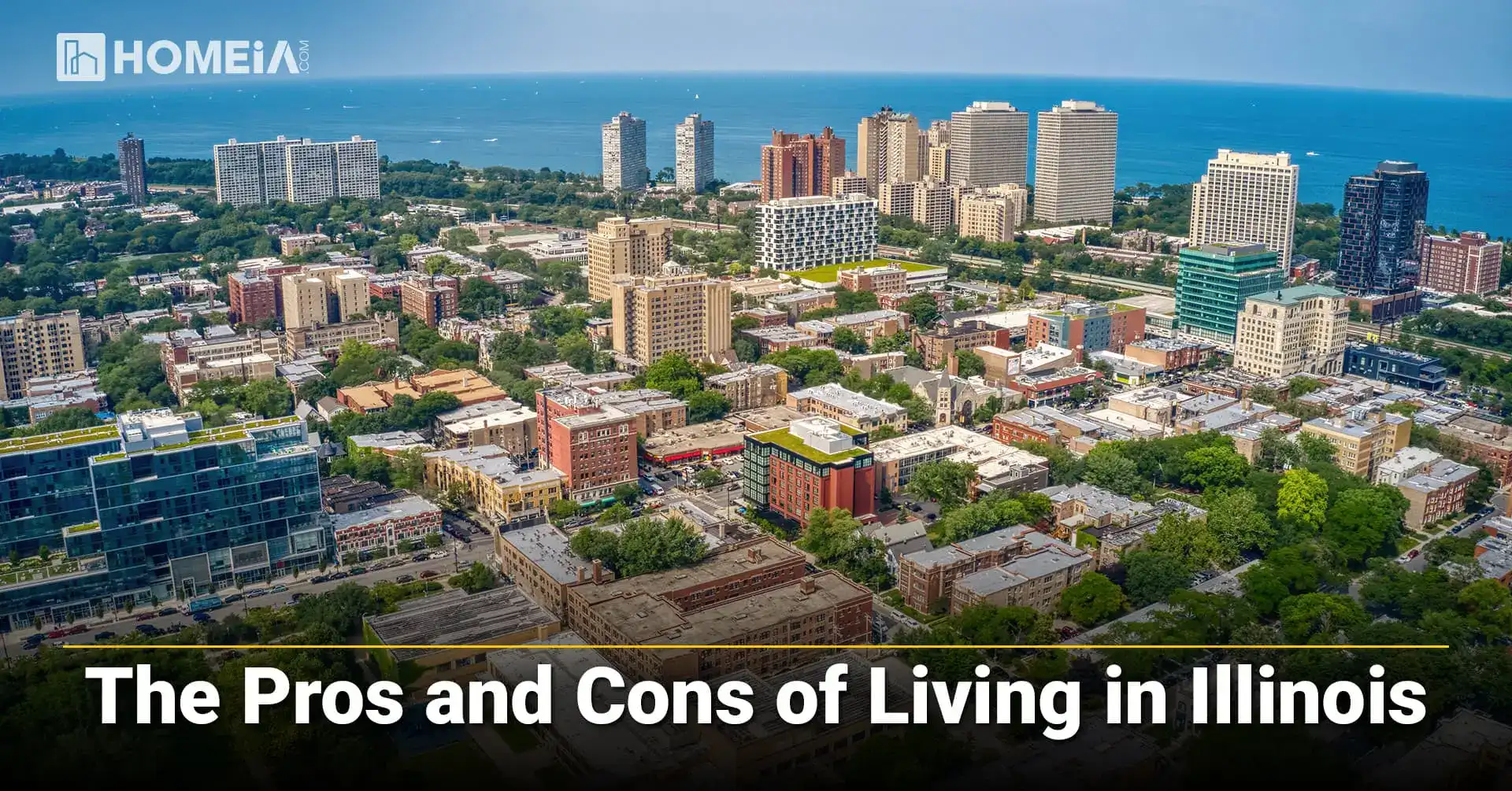Living In Connecticut
Local Editor(s)

Table of Contents:
- The Complete Guide to Cost of Living and Lifestyle
- 1. Connecticut Housing Costs: Navigating a Varied Market
- 2. Connecticut Tax Structure: The High-Tax Reality
- 3. Daily Living Expenses in Connecticut
- 4. Family Life in Connecticut: Education and Community
- 5. Connecticut Transportation: Roads and Rails
- 6. Connecticut Job Market and Income Potential
- 7. Cost of Living Comparison: Connecticut vs. Other States
- 8. Connecticut Lifestyle: The Ultimate Trade-Off
- 9. Best Places to Live in Connecticut for Different Needs
- Frequently Asked Questions About Living in Connecticut
The Complete Guide to Cost of Living and Lifestyle
Connecticut is a great place to live because it has excellent schools, a good lifestyle, and is located between Boston and New York City. The Constitution State attracts everyone from finance professionals and academics to families seeking excellent schools and safe communities. However, this desirable lifestyle comes with a high baseline cost of living driven by its affluence and New England location. This comprehensive guide covers housing prices, taxes, daily expenses, and lifestyle factors to help you decide if this state is your next home.

The Nutmeg State’s housing market is defined by its contrasts. While Fairfield County is one of the most expensive areas in the U.S., other regions offer more accessible entry points. Understanding these trends is key to finding value.
A. Major Connecticut Cities Housing Costs
| City | Median Home Price | Avg. Rent (2-Bedroom) | Notes |
| Hartford | ~$285,000 | $1,350 – $1,500 | The capital city offers more affordable purchase prices, but property taxes are a significant factor. |
| New Haven | ~$340,000 | $1,550 – $1,750 | Home to Yale University and unique cultural offerings. |
| Stamford | ~$650,000 | $2,300 – $2,700 | A major corporate hub with a high cost of living but abundant job opportunities and a NYC commute. |
| Norwalk | ~$575,000 | $2,100 – $2,500 | A vibrant coastal city with a growing downtown, offering a slightly lower price point than Stamford. |
| Middletown | ~$295,000 | $1,450 – $1,600 | A central riverfront city with a college-town atmosphere and relative affordability. |
B. Connecticut Housing Strategies and Financial Options
Financing a home in Connecticut is similar to other states, with FHA (Federal Housing Authority), VA (Veterans Affairs), and conventional loans widely available. However, first-time homebuyers must pay special attention to the annual property tax bill, which can often add $500-$1,500+ to your monthly mortgage payment. A thorough home inspection is crucial, especially for the state’s many charming but older homes, to check for issues like outdated electrical systems, insulation, and aging roofs.
Moving to Connecticut: The Complete Relocation Guide & Checklist
Bordered by New York, Massachusetts, and Rhode Island, Connecticut combines coastal beauty, New England charm, and modern convenience. Home to about 3.6 million residents, the Constitution State attracts families and professionals with its top-rated schools, safe neighborhoods, and proximity to both Boston and New York City…
2. Connecticut Tax Structure: The High-Tax Reality

A. Connecticut State Taxes Overview
Connecticut’s tax structure is a significant consideration for residents. There is a progressive state income tax that tops out at 6.99% for top earners. The statewide sales tax is 6.35%, though most clothing and footwear under $100 are exempt. The most impactful tax for most homeowners is the property tax, which is levied by municipalities and is among the highest in the nation. An annual personal property tax applies to all registered vehicles.
B. Tax Comparison: Connecticut vs. Other States
| Tax Type | Connecticut | New York | Massachusetts | National Avg. |
| State Income Tax | 3.0% – 6.99% | 4.0% – 10.9% | 5.0% | ~5.1% |
| State Sales Tax | 6.35% | 4.0% – 8.875% | 6.25% | ~6.35% |
| Avg. Property Tax | 1.96% | 1.40% | 1.12% | 1.07% |
| Vehicle Property Tax | Yes | No (but fees) | No | Varies |
3. Daily Living Expenses in Connecticut

Typical living expenses typically run 20%-30% above national averages, making detailed financial planning necessary. For a different perspective, you can read about the cost of living in California vs. Texas.
A. Monthly Living Costs Breakdown
| Expense Category | Connecticut Cost | National Comparison |
| Groceries (per person) | $375-$475/month | 10%-15% above average |
| Utilities (Monthly Avg.) | $250-$450/month | 20%-40% above average (Winter) |
| Gasoline | ~$3.50/gallon | 5%-15% above average |
| Healthcare (individual) | $475-$575/month | 10%-15% above average |
| Internet | $70-$100/month | On par with average |
B. Cost-Saving Strategies for Connecticut Living
Smart Nutmeggers mitigate high costs by:
- Shopping Smart: Using wholesale clubs like BJ’s and Costco, which are prevalent in the state.
- Energy Efficiency: Investing in home weatherization and smart thermostats to manage high heating oil and natural gas bills.
- Utilizing Public Resources: Taking advantage of excellent public libraries, parks, and free community events for entertainment.
- Buying In-Season: Visiting farmers’ markets in the summer and fall for affordable, fresh local produce.
The Pros and Cons of Living in Connecticut
Nestled in the heart of New England, Connecticut combines historic charm, coastal beauty, and modern sophistication. Known as the Constitution State, it offers easy access to New York City and Boston while maintaining its own distinct character with picturesque towns, excellent schools, and a high standard of living…
4. Family Life in Connecticut: Education and Community

Connecticut offers a unique family life centered on strong community bonds and a focus on education.
A. Education in Connecticut
School quality differs significantly between affluent suburbs and less wealthy urban districts. Towns like West Hartford, Glastonbury, and Darien are nationally recognized for their public schools. However, the state has one of the nation’s largest achievement gaps. The University of Connecticut and a host of private colleges provide in-state higher education options.
B. Childcare and Family Costs
| Family Expense | Connecticut Cost | Available Support |
| Childcare (Monthly) | $1,200-$1,800/month | State Care 4 Kids subsidy program |
| Youth Sports | $150-$500/season | Community leagues are popular! |
| Museum/Zoo Memberships | $100-$200/year | Great value for family outings |
5. Connecticut Transportation: Roads and Rails

Transportation in Connecticut is a major budget line item, whether you’re a commuter or a local driver.
A. Vehicle-Related Expenses
| Transportation Cost | Connecticut Average | National Comparison |
| Auto Insurance | $1,800-$2,400/year | Significantly above average |
| Gas Prices | ~$3.50/gallon | Above average |
| Vehicle Registration | $120-$150 + Property Tax | Varies by municipality and vehicle value |
| Tolls | Varies | Electronic tolling on certain highways (e.g., CT 15, I-95) |
B. Public Transit and Rail Travel
- Metro-North Railroad: The main commuting path for Fairfield County to New York City.
- Hartford Line: Connects New Haven to Springfield, MA, with stops in Hartford and other central CT towns. This is helpful for transit across central Connecticut.
- CTtransit: Provides local bus service in major urban areas like Hartford, New Haven, and Stamford.
- Air Travel: Bradley International Airport (BDL) is the state’s primary airport, with Tweed New Haven Airport (HVN) offering limited commercial service.
7 Most Affordable Places to Live in Connecticut
In a state where costs often climb higher than the national average, finding an affordable places to live in Connecticut can be a rewarding challenge. While housing, utilities, and taxes are known to stretch budgets, several communities offer a balance of value and quality of life. These towns and cities provide access to good schools, job opportunities, and the scenic beauty New England is famous for…
6. Connecticut Job Market and Income Potential

Connecticut’s economy is specialized but offers competitive wages in key sectors to help offset the high cost of living.
A. Income Statistics and Employment
| Income Metric | Connecticut | National Average |
| Minimum Wage | $15.69/hour | $7.25/hour |
| Median Household Income | $83,000 | $70,000 |
| Unemployment Rate | ~4.2% | ~3.9% |
B. Major Connecticut Employers and Industries
| Industry | Key Companies/Employers | Typical Salary Range |
| Finance & Insurance | The Hartford, Travelers, Cigna, Bridgewater | $70,000 – $200,000+/year |
| Healthcare | Yale New Haven Health, Hartford Healthcare | $55,000 – $150,000/year |
| Advanced Manufacturing | Pratt & Whitney, Sikorsky, Electric Boat | $60,000 – $120,000/year |
| Education | Yale University, UConn, Public School Districts | $45,000 – $100,000/year |
7. Cost of Living Comparison: Connecticut vs. Other States

| Expense Category | Connecticut | New York | Massachusetts | National Avg. |
| Median Home Price | $400,000 | $430,000 | $580,000 | $357,000 |
| Rent (2-Bedroom) | $1,600 | $1,800 | $2,100 | $1,300 |
| Gas Price/Gallon | $3.50 | $3.60 | $3.40 | $3.60 |
| Utilities (Monthly) | $350 | $320 | $310 | $210 |
The 5 Best Places to Live in Connecticut: A City Comparison
Connecticut offers a balance of historic charm, urban sophistication, and coastal beauty, making it a top choice for those seeking both opportunity and quality of life. Choosing the right community is key, as each area offers something unique — from Stamford’s corporate energy to New Haven’s academic prestige…
8. Connecticut Lifestyle: The Ultimate Trade-Off

The Connecticut lifestyle combines high costs with high rewards: top-rated schools, safe communities, and a rich cultural and natural environment. These benefits are balanced against a significant tax burden, expensive housing, and congested roadways in the southwest, especially on I-95.
A. Lifestyle Advantages of Connecticut Living
Being able to enjoy a day at a beautiful shoreline beach, a hike in the scenic Litchfield Hills, and a world-class theatrical performance—all within an hour’s drive—is unparalleled. The powerful sense of community in its towns and the overall high quality of life are major draws for those who can afford it.
B. Connecticut Living Challenges
A high cost of living is the most significant hurdle. The state’s high taxes are a constant source of budget pressure for residents and have contributed to population stagnation. The socioeconomic divide between wealthy suburbs and struggling post-industrial cities can be dramatic.
9. Best Places to Live in Connecticut for Different Needs

A. Family-Friendly Connecticut Communities
| Community Type | Best Cities | Median Home Price | Key Benefits |
| Top-Tier Schools | West Hartford, Glastonbury, Darien | $600,000 – $1.5M+ | Nationally-ranked schools, abundant amenities |
| Affordable Family | Berlin, Cheshire, South Windsor | $350,000 – $500,000 | Great schools, strong community, lower (for CT) costs |
| Urban Family | West Haven, Middletown | $300,000 – $400,000 | Diversity, cultural access, more affordable entry point |
B. Professional and Retiree Options
- Stamford and Norwalk provide the most diverse corporate job opportunities and a vibrant, urban-suburban lifestyle.
- Hartford offers stable government and insurance careers in a more affordable capital city setting.
- New Haven is a hub for university, healthcare, and biotech jobs in a culturally rich environment.
- Mystic and Litchfield County towns are popular destinations for retirees seeking coastal beauty or pastoral New England charm.
Conclusion: Making Connecticut Living Work for You
Success in Connecticut depends on choosing the right location for your budget and career, understanding the full weight of the tax burden, and embracing the community-oriented, four-season lifestyle. While the cost of living is high, strategic financial planning—and a salary to match—can make it manageable. For those drawn by top-tier education, historical charm, and a high quality of life, the Constitution State offers a rewarding lifestyle that many find worth the price. For a comparison with another state known for its high costs and rich history, explore the pros and cons of living in Massachusetts.
Recommended for you
Frequently Asked Questions About Living in Connecticut
1. What is a comfortable salary to live in Connecticut?
A single person can live comfortably on an annual salary of $70,000-$80,000, depending on housing choices. A family of four typically needs a combined income of $120,000+ to cover housing, childcare, taxes, and other expenses comfortably, especially in Fairfield County.
2. Why are property taxes so high in Connecticut?
Property taxes are the primary source of revenue for Connecticut’s towns and cities, funding local education, public safety, and infrastructure. The state’s heavy reliance on this form of taxation, combined with high costs for services, results in some of the highest effective property tax rates in the country.
3. How do people afford homes in Connecticut?
Many residents afford homes through high dual-income households, generational wealth, or by moving to the state later in their careers with substantial equity from a previous home sale. First-time buyers often start with condos or smaller single-family homes in more affordable towns.
4. Is healthcare more expensive in Connecticut?
Yes, healthcare costs are 10%-15% above the national average. The state has world-class medical facilities, including Yale New Haven Hospital and Hartford Hospital, and a high concentration of medical professionals.
5. What are the biggest hidden costs?
The largest hidden costs for newcomers are property taxes (both on homes and vehicles), high auto insurance premiums, and the cost of maintaining an older home (common in New England), such as septic system replacement, well pump issues, or oil heat tank servicing.
6. Is Connecticut a good place to retire?
It can be for the right retiree. The state offers beautiful settings, quality healthcare, and cultural attractions. However, the high tax burden can be a significant drain on a fixed income, leading many retirees to consider moving to states with lower taxes, such as those explored in our guide to the best places to retire in Florida.
Local Editor(s)
The Pros and Cons of Living in Connecticut
Nestled in the heart of New England, Connecticut offers a unique blend of historic charm, coastal beauty, and modern affluence. Known as the Constitution State, it boasts proximity to major…
The 5 Best Places to Live in Connecticut: A City Comparison
Connecticut is filled with charming contrasts, where historic New England towns meet vibrant urban centers and affluent suburbs border scenic coastlines. Choosing the right community within the Constitution State is…
Moving to Connecticut: The Complete Relocation Guide & Checklist
Bordered by New York, Massachusetts, and Rhode Island, and home to a stunning coastline along Long Island Sound, Connecticut offers a lifestyle defined by New England charm, historical significance, and…
7 Most Affordable Places to Live in Connecticut
In a state known for its high cost of living, finding the most affordable places to live in Connecticut can feel like searching for a hidden treasure. The Constitution State's…
15 Best Places to Raise a Family in the US
If you’re considering a move to America and you haven’t visited yet, here’s the first thing you need to know: There are many great places in the U.S. to raise…
The 10 Best and Most Affordable Places in the US to Retire on Social Security
The retirement years bring more time to enjoy being at home or out in the community, and also a newfound geographical freedom. No longer tied to a workplace, retirees may…
Top 5 Cities for U.S. Renters
If you have been searching for the ideal city in which to rent a property, many factors may influence your decision. You might be looking for housing close to schools,…
10 Most Affordable (Safe) Places to Live in the U.S. [Updated]
As the halfway mark of the year comes to a close, many begin to plan their future for the remaining months and beyond. If one of these ideas has been…
The Pros and Cons of Living in Texas
Howdy! Thinking about moving to the Lone Star State? You’re not alone. Moving to Texas is trending as the state continues to attract new residents with its economic opportunities, cultural vibrancy, affordable cost of living, and distinctive lifestyle. Relocating to…
The Pros and Cons of Living in New Jersey
Considering a move to New Jersey? The Garden State offers a dynamic mix of urban energy, coastal charm, and suburban comfort. Home to nearly 9 million residents, New Jersey features vibrant cities, peaceful towns, stunning beaches, dense forests, and cultural…
The Pros and Cons of Living in Illinois (updated)
Relocating to a new state requires careful consideration of both the state as a whole and the specific community you'll join. If you're considering Illinois, you'll find a state home to vibrant cities, charming small towns, and a diverse mix…
The Pros and Cons of Living in Arkansas
Considering a move to Arkansas? The Natural State offers a compelling blend of affordability and natural beauty that attracts new residents from across the country. Home to 3 million people, Arkansas features everything from vibrant cities to charming small towns,…

 Considering
Considering



















































